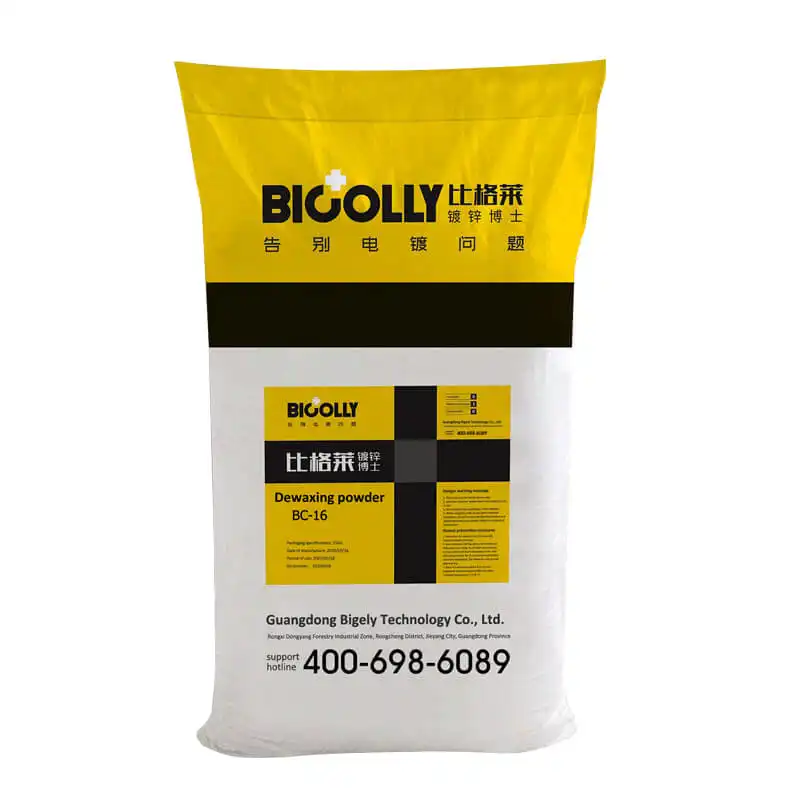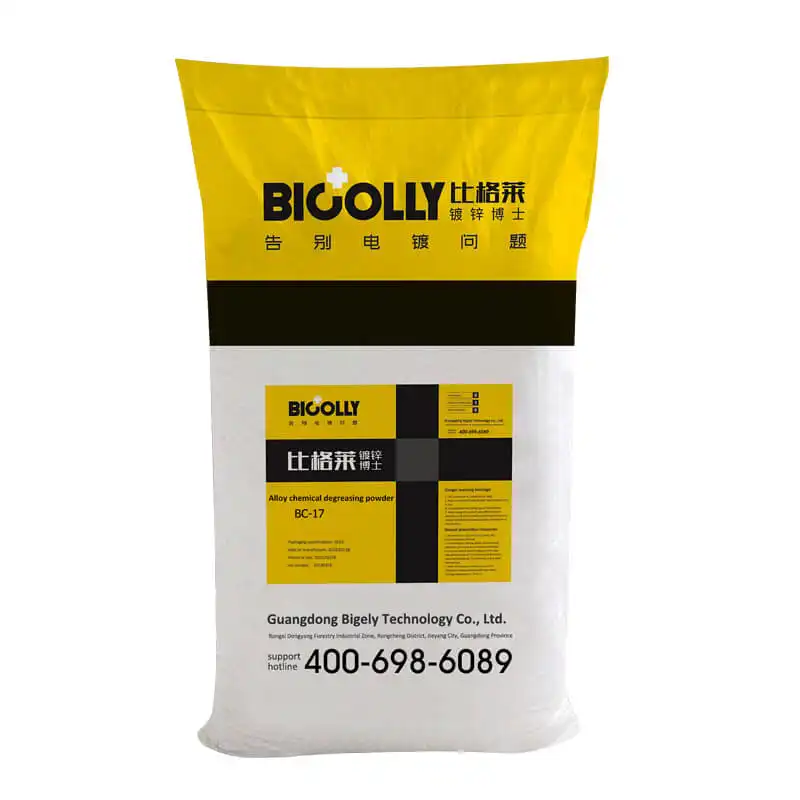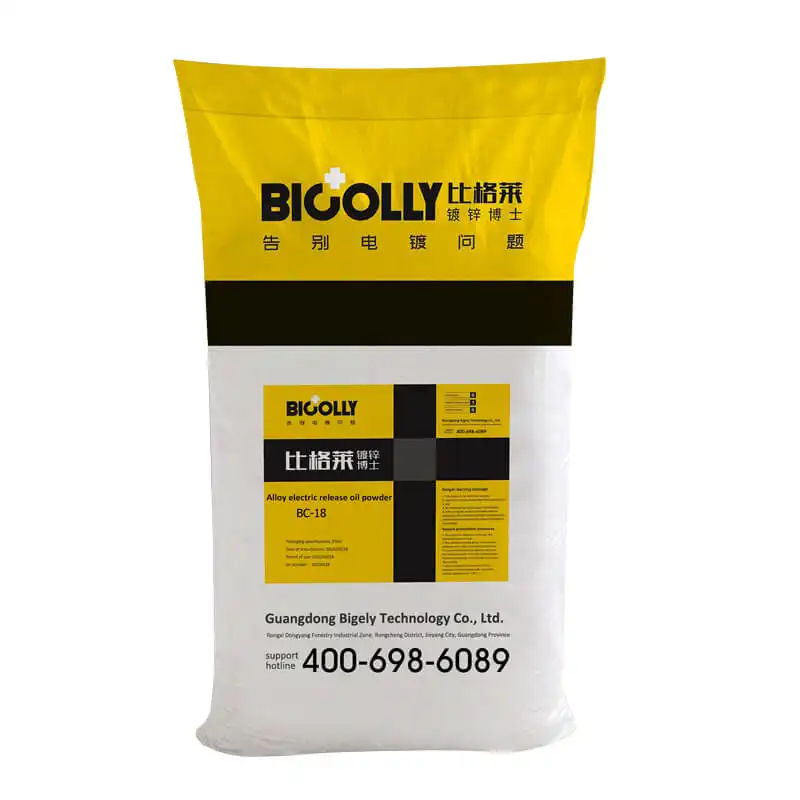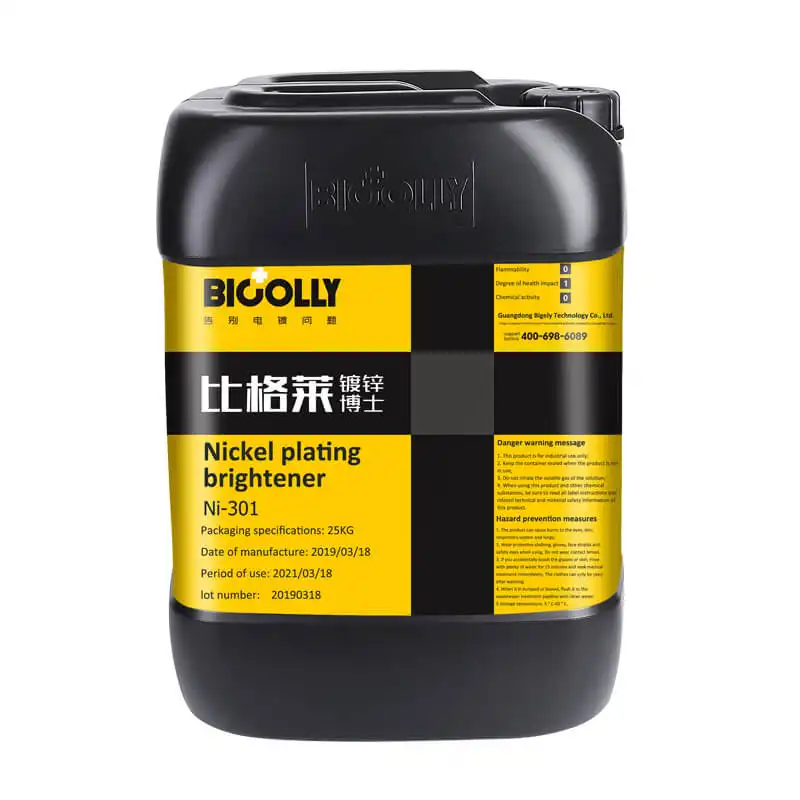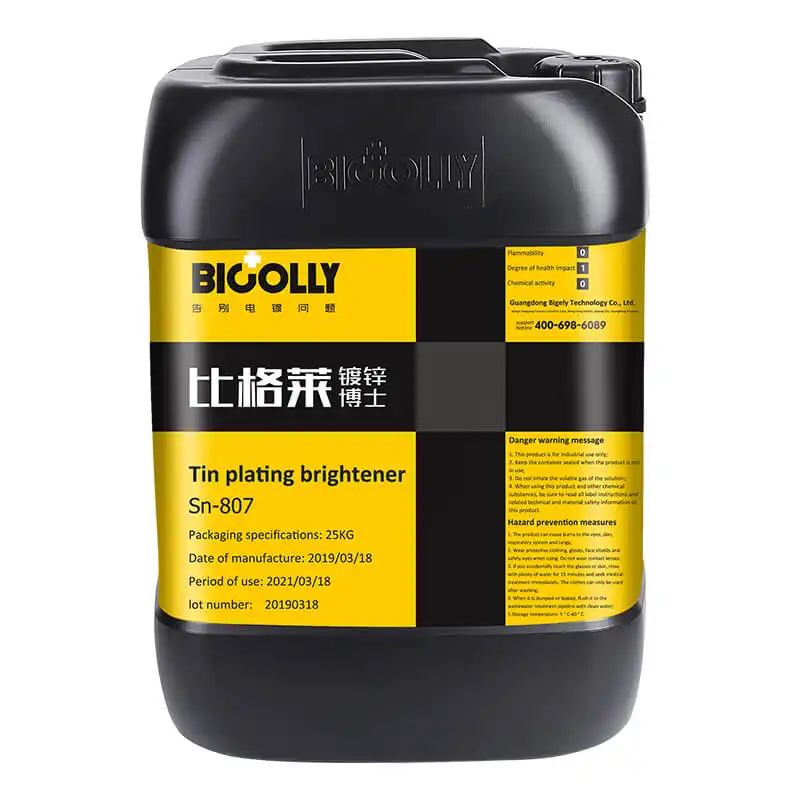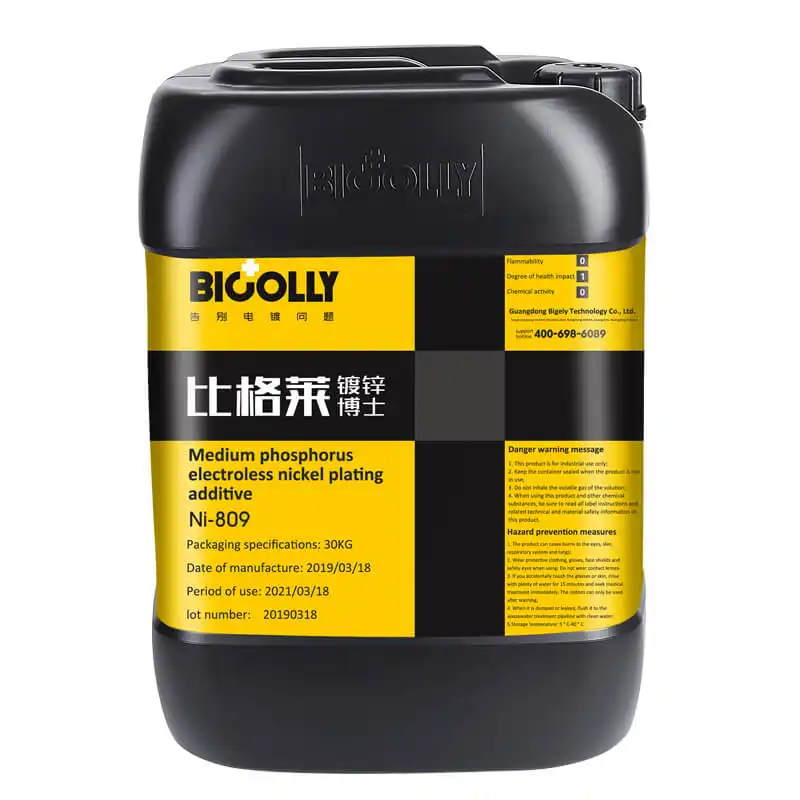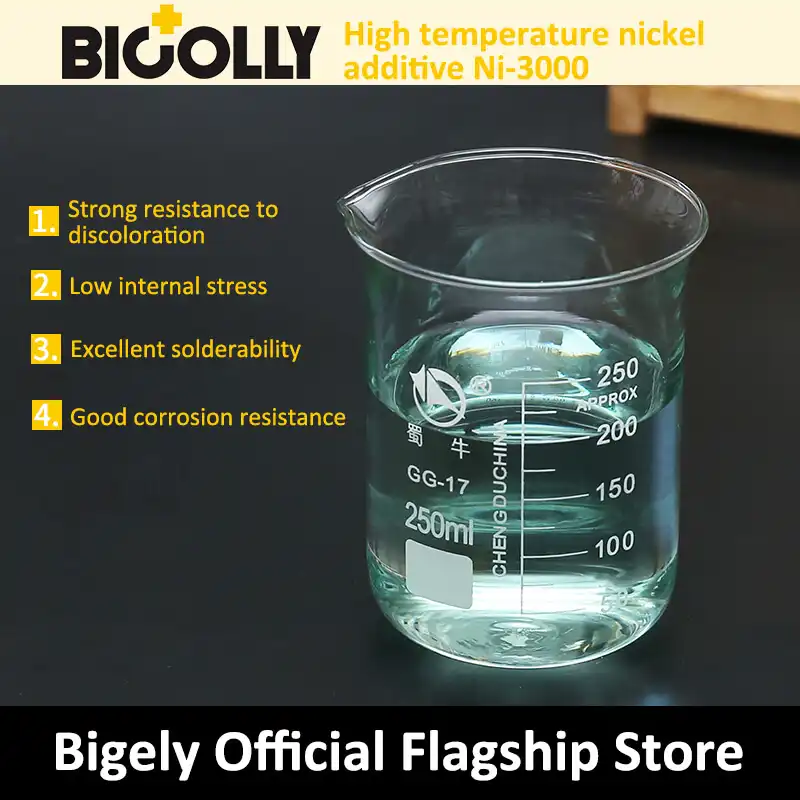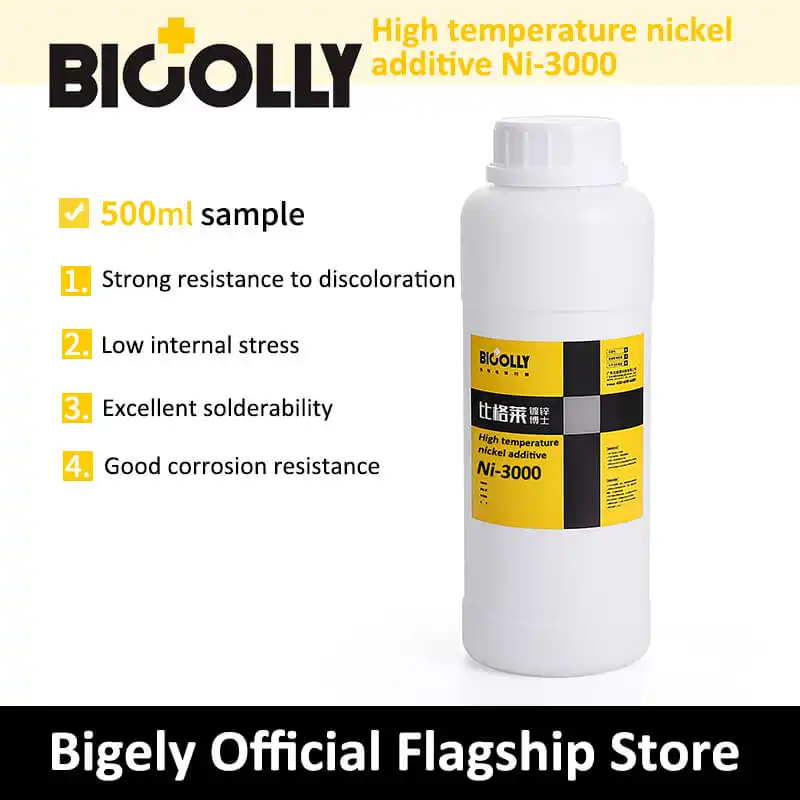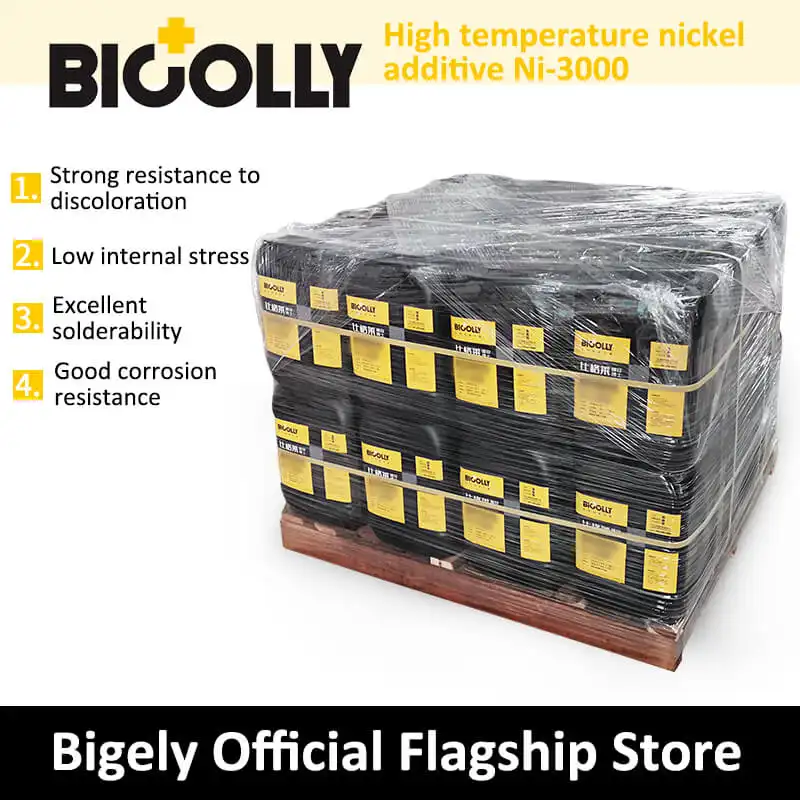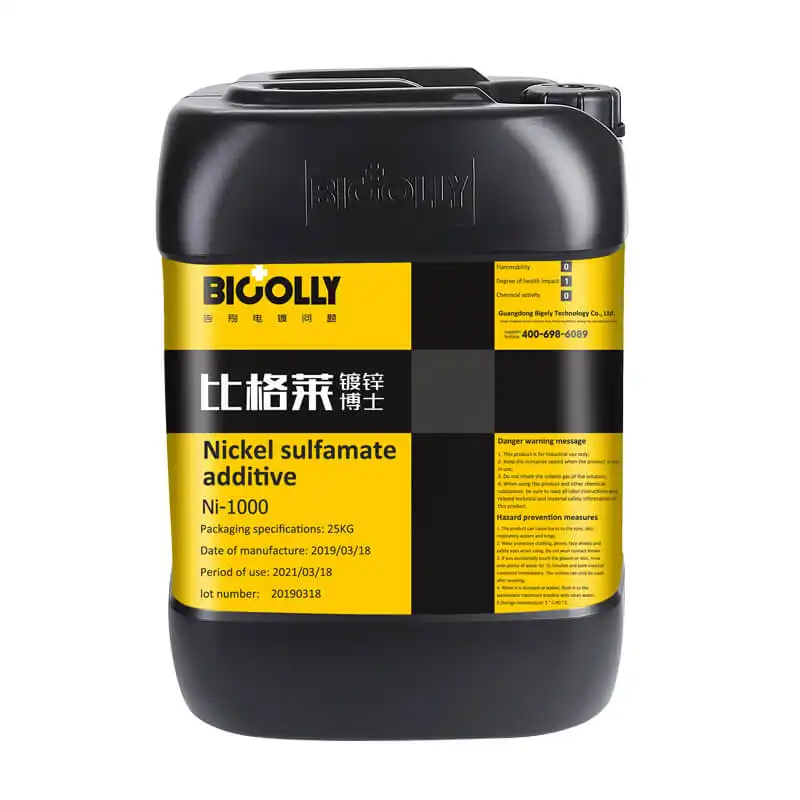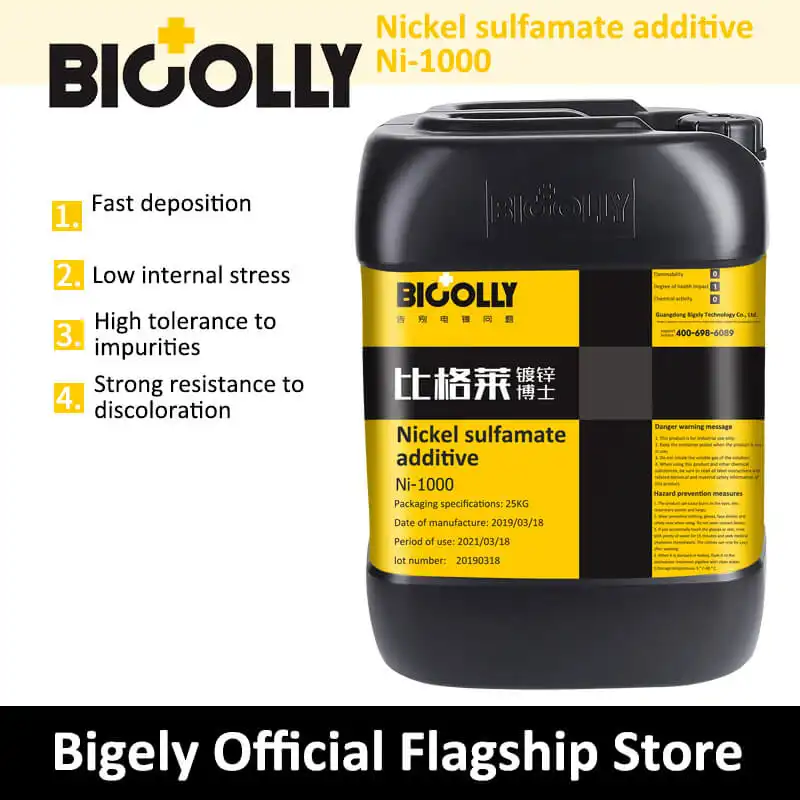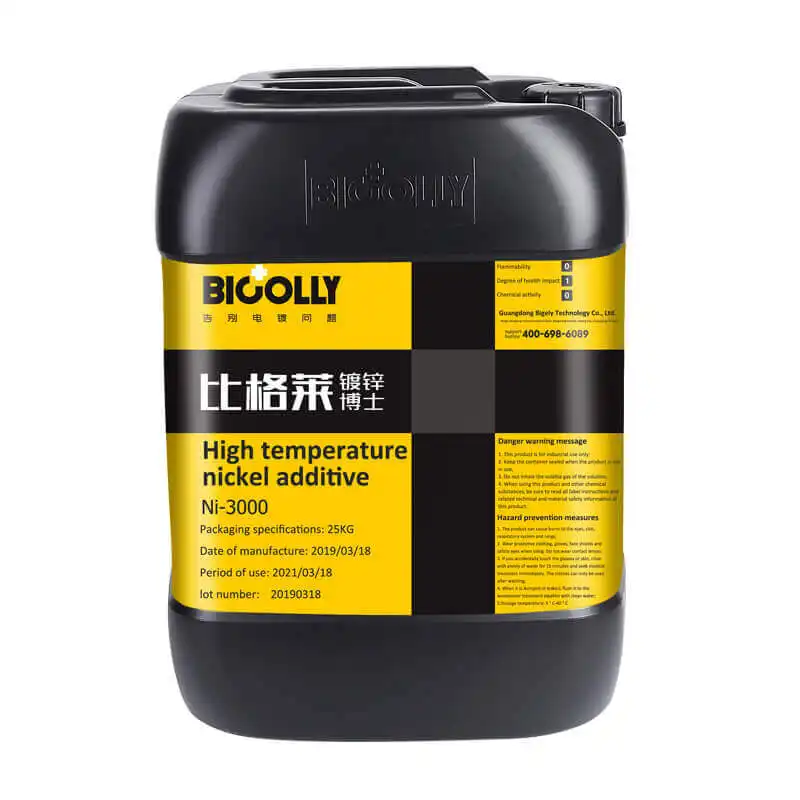High temperature nickel additives
High temperature nickel additive for continuous plating
Number: Ni - 3000
instructions
NI-3000 is a specially prepared additive for continuous plating of nickel sulfonate on a substrate and then pure (bright/mist) tin. This additive allows the plated workpiece to pass high temperature reflow tests (IR, reflow) without discoloration of the coating surface. Its main features and advantages are summarized as follows:
suitable for use in the fog of sulfamic acid nickel base/sardines/bright tin process
is easy to use, can be carried through simple titration analysis
high nickel plating efficiency, without the need for high temperature
don't affect the function of nickel plating
low foam
maintain excellent weldability and the coating appearance
Operating conditions:
Ni-3000 should be added to the continuous nickel sulfonate plating process at a concentration of 1% by volume. All other operating parameters of nickel sulfamate remain the same; For other relevant parameters, please refer to the relevant technical data.
Supplementation of the NI-3000 is subject to the results of the titration procedure attached below. The amount used is based on take-up and plating consumption. The additive amount is estimated to be about 0.5L/KAH, but the actual additive amount should be determined according to the actual usage.
The concentration of Ni-3000 should be maintained between 5-20ml/L, and the optimum value should be 10ml/L. Operating concentrations below 5 mL /L will result in performance degradation (tin will discolor after high temperature testing).
Note: the NI-3000 process cannot be operated under the condition of concentration of 20ml/L
Analysis program:
1.0 an overview of the
1.1 The concentration of Ni-3000 additive in the solution of the nickel sulfonate process can be determined by iodometric titration with 0.1N sodium thiosulfate solution.
1.2 A certain amount of standard/bath solution is titrated with starch indicator.
1.3 The concentration of the additive is calculated by the value shown in the transition from blue-purple to colorless end point.
2.0 Equipment and Instruments
2.1 25 ml graduated cylinder
2.2 Two 50ml test tubes
2.3 Two 250ml iodine bottles with stoppers
2.4 10ml pipette
3.0 Reagents and materials
3.1 0.1N iodine titration reagent
3.2 0.1N sodium thiosulfate reagent
3.3 Starch indicator (new)
3.4 Sodium bicarbonate
3.5 glacial acetic acid
4.0 the program
4.1 Using a 25ml measuring cylinder, measure 10ml pure water into a 250ml iodine flask and mark it "empty"
White liquor ".
4.2 Use 20ml pipette to remove 20.0ml of cooled operating solution to 250ml
Iodine bottle, and label "sample solution".
4.3 Carefully add approximately 2.5 grams of sodium bicarbonate to each bottle, do not add it all at once
Otherwise, it will quickly produce a bubble. Stir for about 1 minute, sodium bicarbonate
It's going to dissolve completely.
4.4 Add 40.0 mL of 0.1N iodine solution to the sample bottle, quickly mix and stop the bottle. leave
Measure the volume of iodine added and record it as V1
4.5 Add 40.0 mL of 0.1N iodine solution to a blank sample bottle and record as V2
4.6 Place both bottles in the dark for one hour to allow full reaction.
4.7 After 1 hour, slowly add 25 mL acetic acid to the bottle labeled "sample solution".
The solution will produce foam.
4.8 Add 5ml of newly prepared starch indicator and titrate with 0.1N sodium thiosulfate to the colorless end point.
4.9 Record the dosage of 0.1N sodium thiosulfate used -- V3.
4.10 With the solution labeled "blank" on the bottle, repeat 4.6 to 4.8 and record as V4.
5.0 calculation
The concentration of Ni-3000 was calculated as follows:
Ni - 3000 (ml/L) = {[(V1 (N1) (N2 (V3)] - [((V2 (N1) (N2) (V4) x 50
-- -- -- -- -- -- -- -- -- -- -- -- -- -- -- -- -- -- -- -- -- -- -- -- -- -- -- -- -- -- -- -- -- -- -- -- -- -- -- -- -- -- -- -- -- -- -- -- -- -- -- -- -- -- -- -- -- -- -- -- -- -- -- -- -- -- -- by 41.15
Liquid sample quantity
The volume at step 4.4 is V1
The volume of step 4.5 is V2
The volume of step 4.9 is V3
The volume of step 4.10 is V4
The equivalent concentration of iodine is N1
The equivalent concentration of sodium thiosulfate is N2
The volume unit of sample solution is ml
 Products
Products